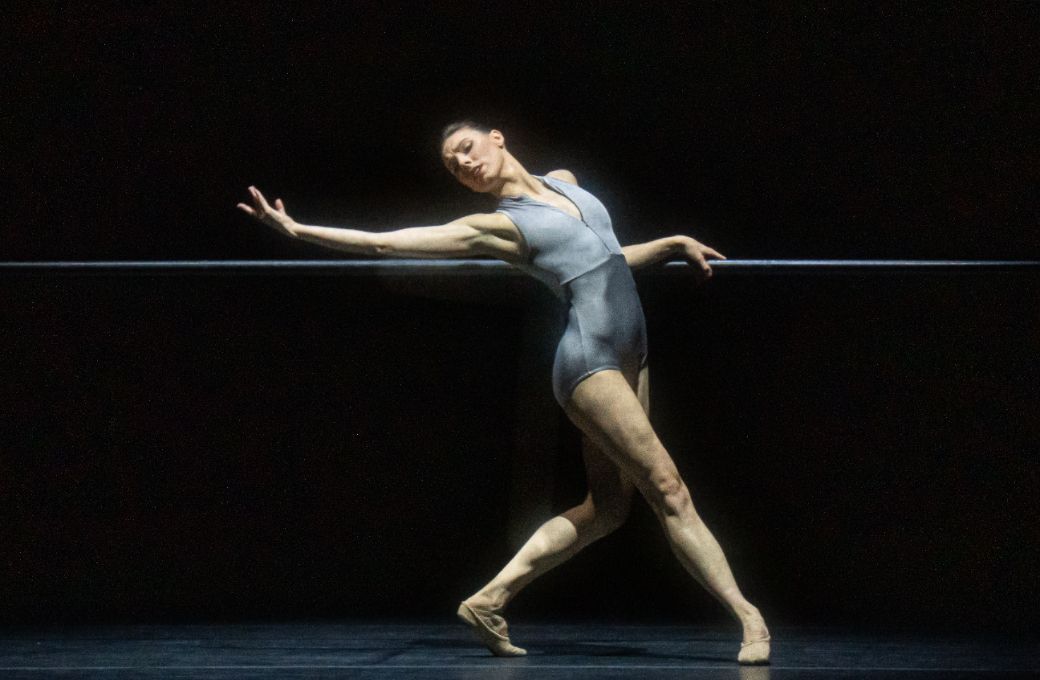Tiler Peck has some new friends she wants us to meet. After touring London and California, her eclectic program with a cute title has returned to City Center with some new faces from New York City Ballet and Boston Ballet – Mira Nadon, Chun Wai Chan, Ryan Tomash, Quinn Starner and Jeffrey Cirio. Old friends from the original cast who also make an appearance are India Bradley, Christopher Grant, Lex Ishimoto, Roman Mejia, Michelle Dorrance, Jillian Meyers and Byron Tittle. It’s a formidable crew with a range not normally seen on Peck’s home turf at City Ballet.

Peck, Mejia, Ishimoto and Cirio kicked off the proceedings at full throttle in William Forsythe’s The Barre Project, Blake Works II. Created, miraculously, during lockdown on video calls and initially documented on film, the work hit differently, felt less raw in live performance, with the terror of COVID less immediate. But there remained a heroic quality to the performance on opening night, with nerves of steel required to hit those elusive beats in James Blake’s heavily processed sound, to slam on the brakes and pivot, to fire off a tattoo of beaten jumps.
Peck’s own choreography in Thousandth Orange, set to Caroline Shaw's chamber work by that name, felt like a shared reverie between devoted friends. It reminded me of the colors and whimsy of the 1918 painting of a picnic by the avant-garde Florine Stettheimer, who portrayed her sisters and artist friends Marcel Duchamp and Elie Nadelman stretched out idly on the grass while farmhands harvested crops in distant fields.
Behind Peck’s dancers stunningly outfitted in color-blocked unitards, members of the Bergamot Quartet harvested the oranges – the piano solemn and insistent, trying to corral the violins and cello, who had lively ideas of their own up until the end. At one point, Ryan Tomash hoisted the willowy Mira Nadon high into the air as she looked down affectionately at him. When he put her down she vibrated enchantingly in bourrées, but his attention had wandered. Technically superb, the dancers looked serene and wistful at times but more often nonplussed, as if they weren't sure who they were meant to be.
Peck and Mejia brought simmering drama to Alonzo King’s spare, absorbing Swift Arrow, a duet that was the high point of the program and the most gripping work I’ve seen them in together. She was arrow-sharp in her opening solo, barely clad in a low-back midnight blue leotard, yet there was delicacy and a sense of precariousness in the small gestures of supplication that punctuated her big sweeping, off-kilter moves. Mejia shed his customary athletic bravura (and most of his clothing, save for a pair of briefs) for the fierce concentration of someone negotiating a minefield. When they first faced off, she balanced on pointe and leaned into a long, unwavering line, her weight channeled through an upraised arm that met his in clenched hands. This tense position initiated an edgy encounter that radiated vulnerability and grit and found an unexpectedly tender resolution.
A program note quoted a passage from the Upanishads that references an arrow shot from a bow becoming one with its target. The dance in turn illumined the idea that a dancer can achieve transcendence by merging with music – in this case, an achingly grand and mournful piece for piano by Jason Moran, played live by the remarkable young pianist Sequoia Snyder.
Time Sleep brought bunheads and hoofers together, opening with a scenario that felt like an homage to Jerome Robbins’ Glass Pieces, with urbanites striding through the city at twilight, pausing together on cue, to rhythms laid down by the extraordinary Michelle Dorrance.
The dancers then faced off in diverting tête-à-têtes (or pied-à-pieds.) At one point, four ballet dancers in white leotards came on like sea birds, shimmying their shoulders and picking their way delicately on pointe through imaginary surf. Meanwhile, tiny dynamo Jillian Meyers, maven of stage, screen and commercial dance, positioned upstage of them in baggy black pants and an unbuttoned shirt, her back to the audience, eyed them over one shoulder and mimicked their moves in a more earthbound style – so hilarious yet brilliant that she pulled focus from them. In fact, whenever she was on stage she commanded attention.
By the exhilarating finale, everyone was not only doing the thing they do best, but picking up cues from each other, absorbing a new language, whether it was ballet, tap or jazz. Ishimoto tossed in some b-boying moves. Everyone tapped, pirouetted and pas-de-chatted triumphantly. It felt like America before demagogues invoked the phony culture wars.
Time Sleep did feel more like Time Stamp when the tappers were performing on their platform – way over-miked, they drowned out the musicians and the boominess dragged those passages down. Nevertheless, the vitality and creative genius behind the work was irrepressible.


